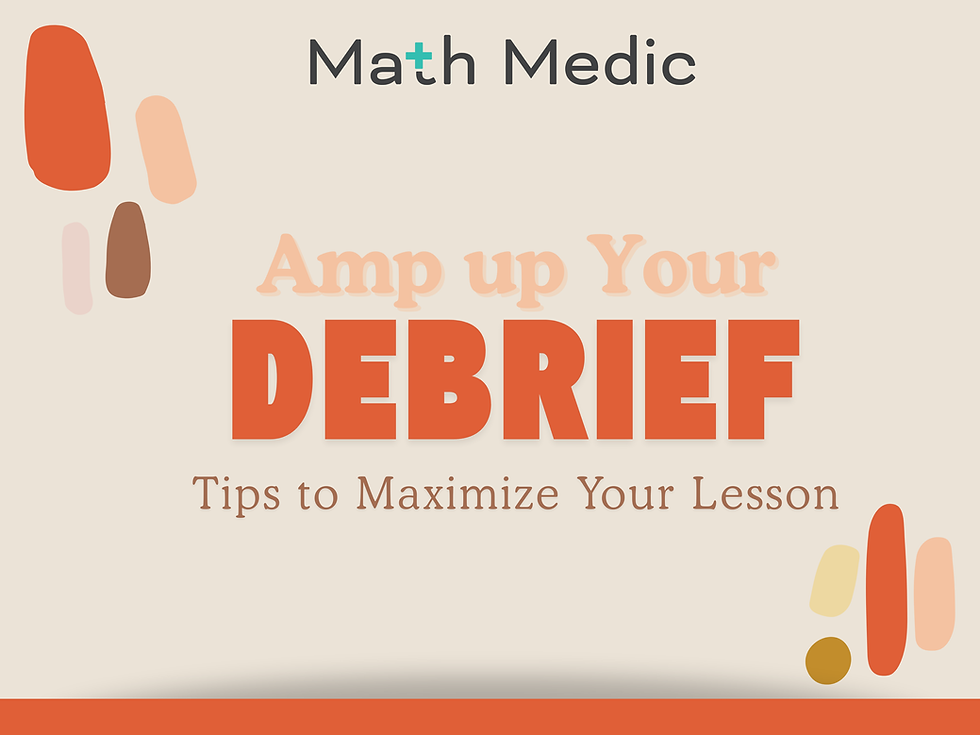Reviewing without Reteaching - Part 1
- Sarah Stecher

- Apr 19, 2020
- 3 min read
Updated: Feb 16
As we come to the end of the first semester, we're starting to think about how we will review with our students before exams. In my early years teaching high school math, I thought preparing students for the exam meant that I needed to reteach as much of the content as possible. I planned lectures and study guides that covered all the big ideas from the semester. I felt like my students were totally prepared and were going to rock the test. But every year, I would be surprised when my students didn't do as well as I thought they would. I would look at questions and think, "How did they get that wrong? We just went over it yesterday?!" So the next semester, I'd do even more reteaching and more practice problems, but the scores didn’t improve.
I finally realized that if I wanted students to do better on the final exams, I had to approach the review period differently. By just reteaching material, I was actually creating some big problems.
Problem 1: Lack of student ownership
When I would get to the end of a review class period, I would be exhausted and my mouth would be dry from all the talking. (How was this not a HUGE warning sign???) Looking back now, I can see that I was doing all of the work! The students didn’t have to do any thinking. They just had to mimic what I was doing. They didn’t even have to think about what the important concepts of the course were. I was doing it all for them. I was making the review my responsibility instead of theirs.
Problem 2: No self-assessment
I was the one deciding for the students what they would review. Students were given no opportunity for self-assessment. No chance to decide what they needed to work on. It didn’t matter that some students were already really good at quadratics, we were going to spend valuable time going over it again. What a waste! Think back to the last time you studied for a test. Did you study the material you already knew or did you focus on the areas you had struggled with? Students need to be given the agency to decide for themselves what they need to review.
Problem 3: False sense of understanding
Oftentimes we think that if we can cover as many topics as possible in our review, students will be better off. We provide multiple opportunities to practice a skill so that students feel comfortable and confident. But the question I had to wrestle with was this: do students actually understand what is happening in these problems, or are they just familiar with the type of problem?
If I had a dollar for every time a student came to me asking for help on a problem saying “I know we did this, there was one like it on the review”, I would have...many dollars. Simply remembering that they’ve done that type of problem before is not sufficient for transferring that learning to new contexts. Instead of approaching a new problem based on their content knowledge, they try to attach the question to one they had done previously and mimic the solution step-by-step.
Modeling how to solve the different types of problems they could encounter on the exam feels helpful, but can often instill a false sense of confidence in students. This is because they confuse familiarity with understanding. They see you do the problem and dutifully follow along on their own page. Because the solution makes sense to them, they falsely assume that they would know how to do it on their own.
So how do we review without reteaching? We’ll detail some of our favorite review strategies in the next blog post, Reviewing without Reteaching - Part 2. Stay tuned!



